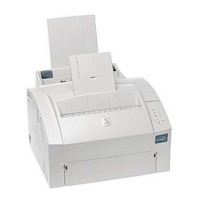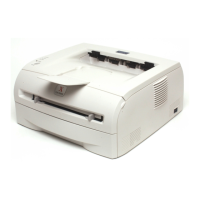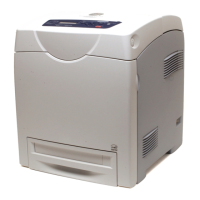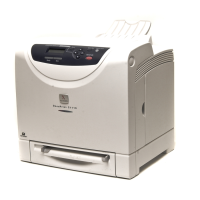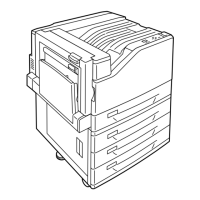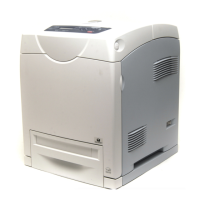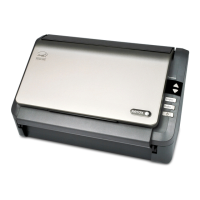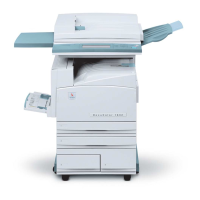Loading Paper 37
IE
IE
Unsupported Paper
Do not use the following types of paper or media.
They can cause paper jams or printer failure.
• Bond paper
• Coated paper
• Transparencies other than those recommended
• Ink jet paper, ink jet transparencies, or ink jet
postcards
• Paper that is too heavyweight or too lightweight
• Paper pre-printed with other printer or copier
• Wrinkled, creased, or ripped paper
• Damp or wet paper
• Lumpy or curled paper
• Static-cling paper
• Pasted-up or glued paper
• Postcards with pre-printed pictures
• Specially coated paper
• Color paper with surface treatments
• Paper that is coated with anti set-off white
powder (micro powder)
• Paper that has perforations
• Paper that uses ink that deteriorates with heat
• Photosensitive paper
• Carbon paper
• Paper with staples, clips, ribbons, or tape
• Paper with rough surface, such as pulp paper or
fibrous paper
• Acid paper (Texts printed on acid paper may
blur. In such case, use alkaline paper instead.)
• Envelopes that are with self-sealing adhesive,
that are not flat, or that have clasps
• Label paper with some labels already peeled
off.
•Tack film
• Water transfer paper
• Textile transfer paper
Important
• If you load postcards with pre-printed pictures, the anti
set-off powder sticks to the feed rolls, preventing the
postcards from being fed properly.
Loading Paper
This section explains how to load paper in the
bypass tray or trays 1 - 4.
Loading Paper in the Bypass
Tray
Important
• Load paper when the power is switched on.
• Do not load paper of different types simultaneously.
• Do not remove or add paper to the bypass tray while
printing from the bypass tray. Doing so can cause paper
jams.
• Do not place any objects other than paper on the
bypass tray. Do not push down the tray or apply an
excessive force to the tray.
1. Pull the bypass tray open.
2. When loading long paper, extend the
extension tray until it stops (until it clicks into
place). If the tray is not long enough, extend
it all the way.
